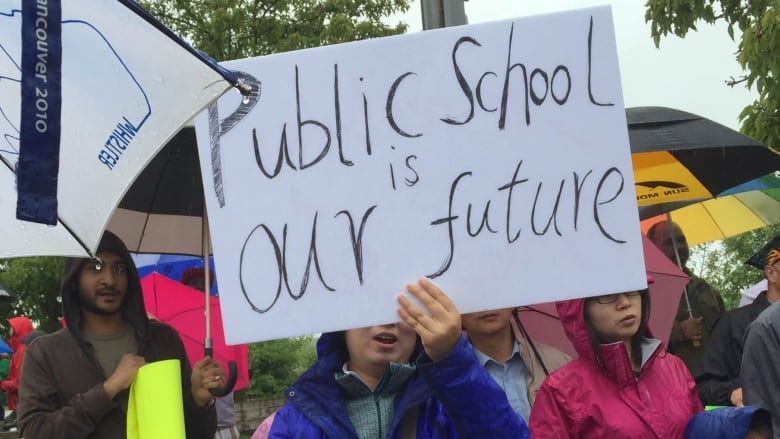B.C. government to eliminate 95% capacity guideline for school upgrades
School districts had argued the rule was forcing them to close schools

A provincially-mandated guidelineschoolsbe at 95 per cent capacity to receive funding for new investments is being relaxed, the minister of education said Monday.
"We are going to look at every investment in the province of British Columbia on a case-by-casebasis," Mike Bernier told reporters.
School boards in the Lower Mainland had cited the requirement as a reason to consider closing under-capacity schools that were in need of seismic upgrades or other work.
- Education Minister on VSB school closures and funding private schools
- Richmond School Board to close at least 5 schools next year
- Vancouver school closures: preliminary list released
"If we were not having to meet the 95 per cent rate, maybe we would not be where we are, but one can't bury their head in the sand," said Richmond School Board chairDebbie Tablotney in April, when the school districtannounced itwould be closing at least five schools in 2017.
Tablotneyapplauded the government's announcement.
"This is good news...we felt hard and fast targets weren't serving districts well," she said, giving credit to trustees and parents that had spoken out.
"This is a result of our advocacy, and this is a win for them. They've really been advocating hard."
In making the announcement, Bernier saidthe 95 per cent figure was never a firm rulebut a target for school districts to work towardand blamed "various parties" for creating "a lot of confusion."
"I look at Richmond;I look at Burnaby and other areas, who feel they need to have utilization rates of 95 per cent before doing seismic upgrades. I want to clarify that is absolutely false," he said.
"Getting rid of the sliding scale of utilization targets used throughout the province based on a district's size better reflects the reality of how school projects are approved in B.C. on a case-by-case basis."
Tablotneysaid the previous language had been confusing for school boards, but that the announcement wouldn't necessarily mean her school district would reverse plans to close schools.
"Trustees are going to have to get together and look at the new announcement. The ground's shifted a little bit. We'll be meeting and discussing what this means for us, but we still have to justify applications to the ministry," she said.
Bernier also said the removal of the sliding scale wouldn't necessarily result in an increase infunding announcements.
"School districts will still need to justify their applications to build new schools or expand existing ones. Taxpayers expect to be investing in the right number of schools for the actual number of students," he said.
"What we're saying is school districts need to do due diligence. They need to make sure when they come forward to work with the province, they're making respectfuland appropriate financial decisions."












_(720p).jpg)


 OFFICIAL HD MUSIC VIDEO.jpg)
.jpg)



























































































